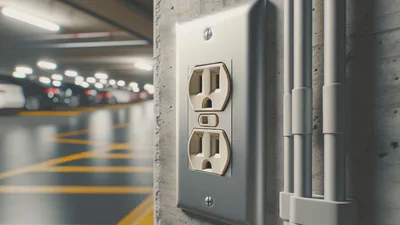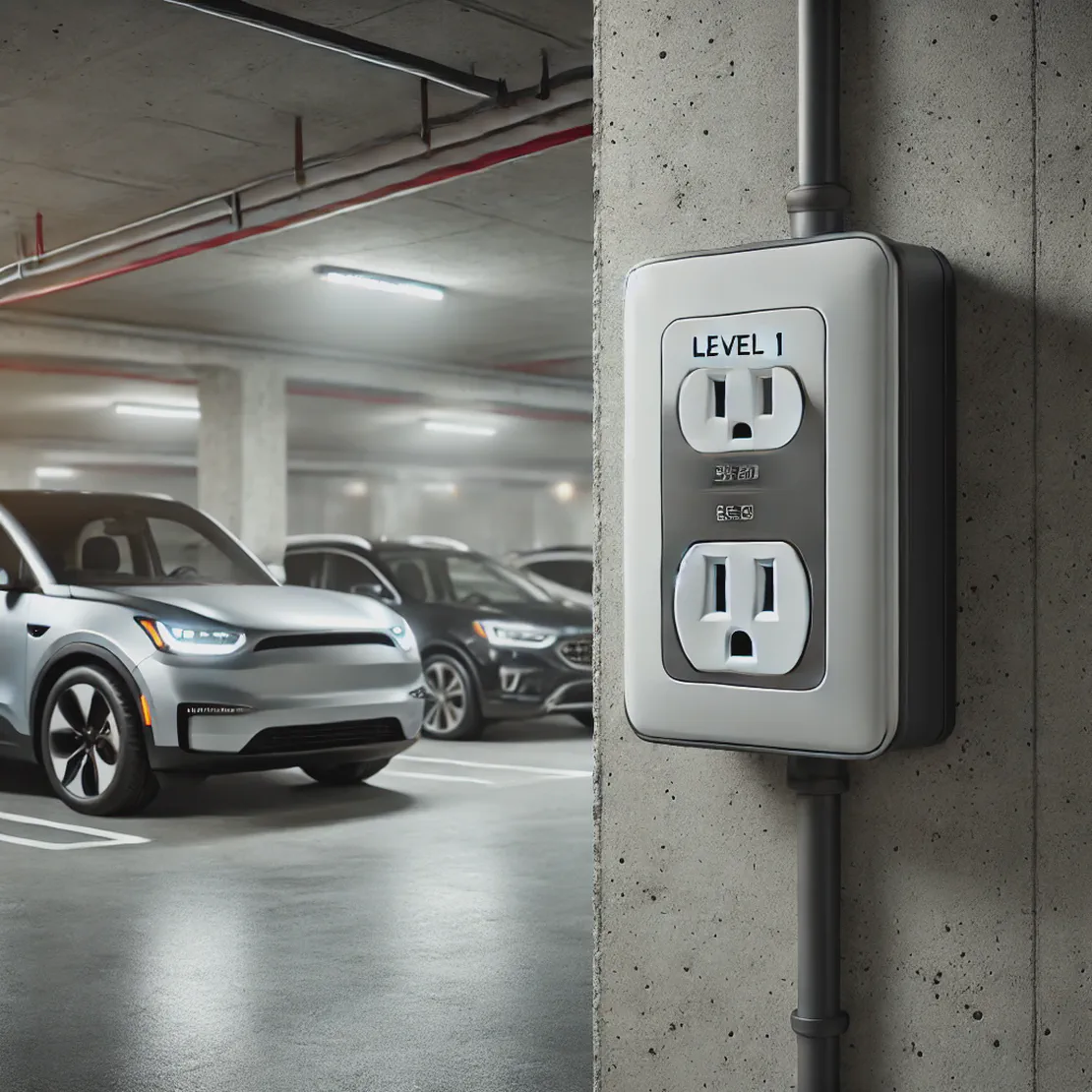
The Unexpected Effectiveness of Level 1 EV Charging
- Survey, Research
- Survey , Research , EV Charging , Video
- August 2, 2024
- 5 min read
Electric vehicle (EV) adoption continues to rise, with more drivers making the switch from traditional internal combustion engine vehicles to greener alternatives. While much attention is often given to the rapid development and installation of Level 2 (L2) and Level 3 (L3) charging stations, recent insights from the Canadian Electric Vehicle (EV) Group on Facebook suggest that Level 1 (L1) charging, which uses a standard 120V outlet, remains a surprisingly viable option for a majority of EV owners.
Insights from the Canadian Electric Vehicle Group on Facebook
The Canadian EV Group on Facebook, boasting a membership of 19,000 EV enthusiasts and owners, provided valuable insights into the daily parking and charging habits of EV drivers. In a survey that received 44 responses within 19 hours, a consistent pattern emerged: most EVs are parked for an average of 22 to 23 hours per day.
Link to Original Survey on the Canadian Electric Vehicle Group
Key Findings
- High Idle Time: The majority of respondents indicated that their EVs are parked for the majority of the day, typically between 22 to 23 hours. This high idle time means that the vehicles are not in use and are available for charging.
- Adequacy of L1 Charging: Given the extended periods during which EVs are parked, L1 charging can add a significant amount of range. One respondent noted that 22 hours of L1 charging could add between 120 and 200 kilometers to the battery, sufficient for the daily needs of many drivers.
- Work-from-Home Impact: Several respondents mentioned that working from home (WFH) has led to even less frequent use of their vehicles, reinforcing the effectiveness of L1 charging for their reduced driving needs.
- Potential for Bi-Directional Charging: There was notable interest in bi-directional charging, which allows EV batteries to supply power back to the grid. This concept could provide an income stream for car owners and enhance grid stability.
Statistical Considerations
While the survey provides valuable real-world insights, it is important to acknowledge its limitations:
- Low Response Rate: Only 44 responses from 19,000 members equate to a response rate of approximately 0.23%. This low rate limits the representativeness of the findings.
- Self-Selection Bias: The survey likely suffers from self-selection bias, as those who chose to respond may have different characteristics compared to those who did not.
- Lack of Demographic Data: The absence of demographic information about respondents limits the ability to fully understand the scope and context of the data.
- Qualitative Nature: The responses are qualitative and subjective, introducing potential variability in how individuals perceive and report their vehicle usage.
The Case for L1 Charging
Despite these statistical weaknesses, the survey’s findings highlight the unexpected viability of L1 charging for many EV owners. The high idle times reported suggest that, for a significant portion of EV drivers, L1 charging can adequately meet their daily driving needs. This is particularly true for those with shorter commutes, infrequent driving habits, or the flexibility to charge their vehicles overnight or during extended periods of parking.
Benefits of L1 Charging
- Accessibility: L1 charging uses a standard 120V outlet, which is readily available in most homes and does not require specialized equipment or installation.
- Cost-Effectiveness: L1 charging is typically less expensive to install and maintain compared to L2 and L3 chargers.
- Convenience: For drivers who do not require rapid charging, L1 chargers offer a simple and convenient solution that can be integrated into their daily routines.
- Even Steven: The concept of “Even Steven” applies here, where L1 charging at a regular outlet in an apartment or condo represents an honest and fair trade between the property owner and the EV driver. It provides a balance, allowing them to charge their vehicles without the need for ultra-precise calculations or costly charging stations. The charging cost estimate is close enough to meet their daily needs effectively, so the property manager is not losing money or investing in expensive hardware that may take years to pay off.
Conclusion
The survey from the Canadian EV Group underscores the potential for L1 charging to play a more prominent role in the EV charging ecosystem. While it may not be suitable for all drivers, particularly those with long commutes or high daily mileage, it presents a viable option for many EV owners. As the EV market continues to grow and evolve, understanding and leveraging the full spectrum of charging options will be crucial in supporting the diverse needs of drivers and promoting the widespread adoption of electric vehicles.

